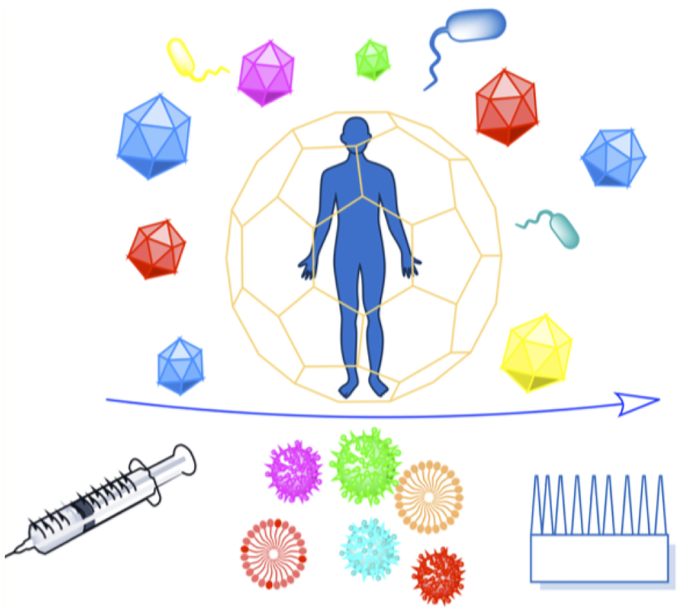Development of vaccine formulations: past, present, and future

The current situation, heavily influenced by the ongoing pandemic, puts vaccines back into the spotlight. However, the conventional and traditional vaccines present disadvantages, particularly related to immunogenicity, stability, and storage of the final product. Often, such products require the maintenance of a “cold chain,” impacting the costs, the availability, and the distribution of vaccines. Here, after a recall of the mode of action of vaccines and the types of vaccines currently available, we analyze the past, present, and future of vaccine formulation. The past focuses on conventional formulations, the present discusses the use of nanoparticles for vaccine delivery and as adjuvants, while the future presents microneedle patches as alternative formulation and administration route. Finally, we compare the advantages and disadvantages of injectable solutions, nanovaccines, and microneedles in terms of efficacy, stability, and patient-friendly design.
Introduction
The challenging months of 2020 have brought to the forefront the critical issues associated with the discovery and formulation of effective treatments and, ultimately, a vaccine during epidemics and pandemics. The emergence of a new type of respiratory coronavirus (severe acute respiratory syndrome, SARS, CoV, or 2019 novel CoV) and its growth in the present-day pandemic recall the previous two experiences with CoV, namely SARS-CoV and Middle East Respiratory Syndrome Coronavirus (MERS-CoV). However, the development of effective vaccines for SARS-CoV or MERS-CoV was slowed or abandoned once the epidemic was controlled . The critical analyses on pandemic preparedness after the H1N1 pandemic highlighting the failure to distribute enough vaccines where they were needed, when they were needed, had not been implemented before the emergence of SARS-CoV2. This has caused a delay in the discovery and formulation of candidate vaccines for SARS-CoV2, requiring an unprecedented effort by public (academia and government bodies) and private (industrial) to fast track the development of vaccines.
The current pandemic highlighted also the challenges related to timely distribution of vaccines for seasonal flu or other diseases, together with the problematic “cold chain” . These challenges are heavily dependent on the vaccine formulations and their features (Table 1), and thereby, on pharmaceutical technology research and innovations.
Download the full publication here: Development of vaccine formulations- past, present, and future
or continue reading here: D’Amico, C., Fontana, F., Cheng, R. et al. Development of vaccine formulations: past, present, and future. Drug Deliv. and Transl. Res. (2021). https://doi.org/10.1007/s13346-021-00924-7
Interested in the ingredients and excipients in the COVID-19 vaccines? Read more:
Interested in more news on pharmaceutical formulation and pharmaceutical excipients? Register for our newsletter


